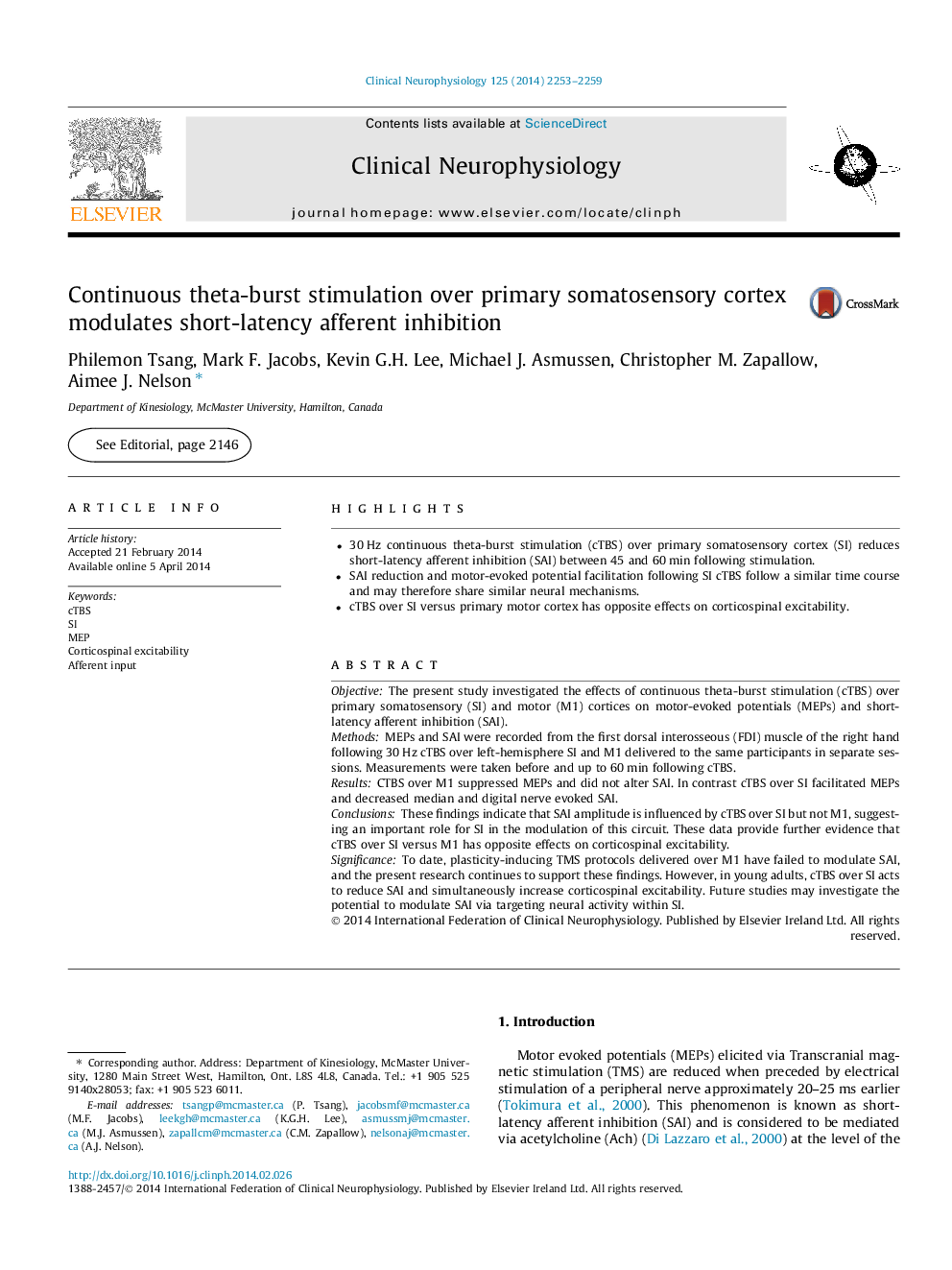| Article ID | Journal | Published Year | Pages | File Type |
|---|---|---|---|---|
| 3043673 | Clinical Neurophysiology | 2014 | 7 Pages |
•30 Hz continuous theta-burst stimulation (cTBS) over primary somatosensory cortex (SI) reduces short-latency afferent inhibition (SAI) between 45 and 60 min following stimulation.•SAI reduction and motor-evoked potential facilitation following SI cTBS follow a similar time course and may therefore share similar neural mechanisms.•cTBS over SI versus primary motor cortex has opposite effects on corticospinal excitability.
ObjectiveThe present study investigated the effects of continuous theta-burst stimulation (cTBS) over primary somatosensory (SI) and motor (M1) cortices on motor-evoked potentials (MEPs) and short-latency afferent inhibition (SAI).MethodsMEPs and SAI were recorded from the first dorsal interosseous (FDI) muscle of the right hand following 30 Hz cTBS over left-hemisphere SI and M1 delivered to the same participants in separate sessions. Measurements were taken before and up to 60 min following cTBS.ResultsCTBS over M1 suppressed MEPs and did not alter SAI. In contrast cTBS over SI facilitated MEPs and decreased median and digital nerve evoked SAI.ConclusionsThese findings indicate that SAI amplitude is influenced by cTBS over SI but not M1, suggesting an important role for SI in the modulation of this circuit. These data provide further evidence that cTBS over SI versus M1 has opposite effects on corticospinal excitability.SignificanceTo date, plasticity-inducing TMS protocols delivered over M1 have failed to modulate SAI, and the present research continues to support these findings. However, in young adults, cTBS over SI acts to reduce SAI and simultaneously increase corticospinal excitability. Future studies may investigate the potential to modulate SAI via targeting neural activity within SI.
